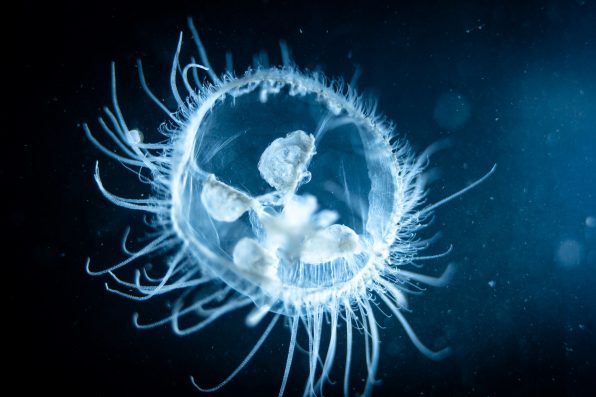The First Peach Blossom Jellyfish Left China During The 20th Century, And Now The Invasive Species Is Found On Nearly Every Continent In The World

The peach blossom jellyfish originated in Yangtze, China, but the invasive species can now be found on every continent around the globe except for Antarctica. They live in calm freshwater habitats, such as lakes, reservoirs, and river backwater channels.
Researchers from the University of British Columbia (UBC) in Canada are now documenting their spread farther north in Canadian waters. It is believed that the first peach blossom jellyfish (Craspedacusta sowerbii) left China at some point during the 20th century and multiplied rapidly in warmer bodies of water around the world.
They possibly migrate by latching onto the feet and bills of birds or hitching rides on boat hulls. They grow up to an inch wide and have approximately 400 tentacles that are venomous but aren’t harmful to humans. Freshwater jellyfish are unable to produce the painful sting that marine jellyfish can.
Canadian sightings of peach blossom jellyfish in the Great Lakes regions date back to the 1930s, but more recently, they have been seen in places like British Columbia’s Lower Mainland and Vancouver Island.
Between 1990 and 2023, there have been an estimated 85 sightings, each involving thousands of jellyfish. Nearly the same number of sightings could be documented before the decade ends. The jellyfish will also likely continue spreading across wider areas.
“We’re the only researchers in Canada investigating these jellyfish, with help from citizen scientists around BC,” said Florian Lüskow, a former postdoctoral fellow at UBC’s Department of Earth, Ocean, and Atmospheric Sciences.
There is still a lot to uncover about the jellyfish’s life in Canadian waters, but the researchers do know about their rare method of reproduction. The jellyfish produce tiny polyps that contain the same genetic material as their parent.
So, each individual population is often made up of “clones” of one another. A jellyfish sighting will usually be a group of all males or all females.
Peach blossom jellyfish tend to spawn in large numbers in water temperatures of at least 70 degrees Fahrenheit. However, since their polyps are so small and difficult to detect, it is possible that they emerge in slightly cooler waters as well.

firesalamander – stock.adobe.com – illustrative purposes only, not the actual jellyfish
“Polyps are very small…and it is challenging to locate them. They inhabit shallow areas and can be found on rocks and submerged wood debris,” said Evgeny Pakhomov, a professor at UBC’s Institute for the Oceans and Fisheries.
“Hence, we usually know about jellyfish introduction when we see the floating medusa form produced by polyps appear in the water, which appears only when the water temperature is higher than 21 degrees Celsius.”
With climate change continuing to alter our environment, water temperatures will become increasingly warmer. Soon, peach blossom jellyfish will probably thrive in wider areas, giving scientists more opportunity to learn more about where their polyps emerge.
Sign up for Chip Chick’s newsletter and get stories like this delivered to your inbox.
More About:Animals





